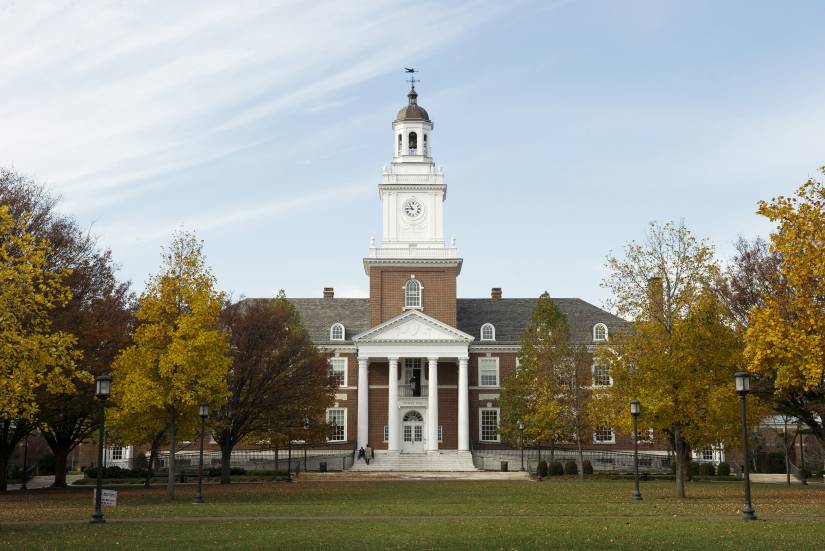Institutional Goals

Johns Hopkins must ensure our institutional frameworks clearly reflect and support inclusive excellence. As part of this overarching aim, we are committed to articulating clearly and unequivocally the guiding principles that drive our work; to investigating and illuminating our past so it may shape our present and future actions; and to investing in and elevating leadership in DEI at all levels of our university.
Goal 1. Adopt a new universitywide statement of principles on diversity, equity and inclusion
In our first JHU Roadmap on Diversity and Inclusion (2016), the university committed to updating and consolidating our various institutional diversity statements into a single reaffirmation of our critical values and renewed commitments to diversity, equity, and inclusion. Our previous statement was from 2006 and was widely perceived as outdated and deficient. Other statements, such as the university’s 2006 civility principles, were identified as conflicting with our Statement of Principles on Academic Freedom and would be more appropriately addressed within our human resources policies.
Thanks to the broad input of students, faculty, and staff over the past several years, we are presenting here a new institutional statement of our principles and commitments to diversity, equity, and inclusion that reflects the continuous evolution of our work and that reaffirms our aspirations for making our institution a more equitable place to learn, work, and live.
Statement of Principles on Diversity, Equity, and Inclusion
At Johns Hopkins we strive to be a model of a pluralistic society in which we acknowledge, embrace, and engage diverse identities, perspectives, and experiences. We seek to build and buttress an inclusive intellectual and physical environment to ensure that all members of our community know with certainty that they belong at Johns Hopkins. And we aspire to equitably share the benefits and burdens of dismantling persistent systemic barriers to individual and communal success.
We believe, fundamentally, that every person has equal dignity and worth, and our unwavering commitment to diversity, equity, and inclusion is rooted in this predicate principle. These core values are essential to our university’s academic, research, and public service missions, and bolster our commitment to excellence. Our search for truth and knowledge for the good of humanity depends on bringing the greatest variety of viewpoints and voices to bear on the challenges before us as students, scholars, staff, neighbors, and citizens.
At the intersection of these values is justice. Over the course of history, our nation and university have breached the ideals of justice by discriminating on the basis of race, ethnicity, sex, gender identity and expression, religious belief and observance, disability, socioeconomic status, veteran/ military status and other factors. We recognize the painful truth that such discrimination has inflicted multigenerational harm and further disenfranchises members of our society. Although our polity and our institution have made meaningful progress, we are by no means past the injury and loss caused by discriminatory practices.
Johns Hopkins assumes its responsibility as a leading research university to work to achieve diversity, equity, and inclusion, and we hold ourselves accountable for our progress through transparency, open communication, and an ongoing, unflinching assessment of met and unmet needs.
Goal 2. Reexamine our history and recognize our diverse community
As we have said previously, at an institution like Johns Hopkins, created in aftermath of the Civil War and implicated in the failed project of Reconstruction and the segregated society that followed, we recognize the critical need not only to chart a path for the future but also to understand, acknowledge, and grapple with our history. Since 2013, the Hopkins Retrospective has been instrumental in broadening the documented history of our institution through research, exhibits, and campus displays that capture and digitize diverse voices, including through oral histories of a number of underrepresented groups, including Black and Latino/a/x, women, LGBTQ, Jewish, and first-generation students, faculty and staff, and in a longstanding collaboration with the Black Faculty and Staff Association (BFSA) on the Indispensable Role of Blacks at Johns Hopkins exhibit. The work of Hopkins Retrospective is ongoing and will continue to include and elevate other voices and stories along the way.
Today, in conjunction with our schools and our faculty, we also are working to develop and illuminate a deeper and more complete understanding of our institutional history, including about Mr. Johns Hopkins and his family and our institution’s connections to the abhorrent practices and impacts of slavery, racism, anti-Semitism, and discrimination of all kinds. At the same time, we are dedicated to ensuring that the public art, iconography and names of programs and buildings across our campuses recognize and make visible the invaluable contributions of the diverse people who have shaped Hopkins and our world for the better.
To that end, the university and its divisions will continue to invest substantial human and financial resources to delve deeply into our past, through efforts such as Hopkins Retrospective and its Reexamining Hopkins History initiative; Martha Jones’ Hard Histories at Hopkins and the ongoing work of the inaugural Name Review Board, recommended by the Committee on Establishing Principles on Naming [CEPN] to review requests for renaming, de-naming or contextualizing the names associated with our academic programs and buildings.
We will also recognize those who have and will continue to shape our institution and our world through the work of the Diverse Names and Narratives Project, which recently announced the naming of the Johns Hopkins Outpatient Center for Levi Watkins, the Undergraduate Teaching Laboratories building Florence Bascom, and the two towers of the Charles Commons residence halls for Ernest Bates and Frederick Scott as well as a public art initiative launched in 2020, through which we are working closely with divisions and departments to honor the diverse people in our history—such as LGBTQ rights advocate Edie Windsor and civic leader and civil rights icon Congressman Elijah Cummings—and engage local and international diverse artists to exhibit their works across our schools and campuses.
Goal 3. Elevate the role of chief diversity officer and expand the Office of Diversity and Inclusion
As several of the working groups of the task force identified, we recognize the need to elevate the profile of our chief diversity officer and expand the human capital resources and infrastructure of our Office of Diversity and Inclusion, as well as ensure mechanisms for cross- institutional coordination and divisional support for implementation of our Roadmap and DEI aims. As part of this commitment, the university will:
- Elevate our chief diversity officer (CDO) as a member of the President’s Cabinet. This position will directly advise the President as a member of the Cabinet, continue to report to the Provost to ensure ongoing academic coordination and collaboration, and deepen partnerships with DEI leaders in the university’s administrative departments, such as the Office of Human Resources.
- Expand the Office of Diversity and Inclusion (ODI) to support the progress of the Roadmap and DEI initiatives more broadly. In addition to recent new hires in the office – the associate vice provost for faculty diversity, associate vice provost for graduate diversity and partnerships, executive director for inclusive excellence education and development, and the associate dean of diversity and inclusion—investments will be made in other areas of strategic need, including the hiring of a new deputy chief diversity officer and a diversity strategist. ODI will continue working with important equity seeking groups, such as Indigenous and Native American, disability, and LGBTQIA+ groups, across the divisions to ensure their participation in all dimensions of the Roadmap and address systemic issues.
- Establish a cross-institutional DEI Coordinating Committee, comprising divisional DEI, Human Resources, and Office of General Counsel professionals, among others, that will share responsibility for and involvement in DEI activities across our institution, assist ODI in reviewing the annual progress toward Roadmap goals, and ensure that everyone in our community knows where to take their concerns and which resources are available to them.
- Continue partnership and consultation with the university’s Diversity Leadership Council (DLC) as adviser to the president and university leadership and aim to maximize opportunities and channels for advancing our Roadmap goals.
Goal 4. Assess and Measure Progress
This second Roadmap will continue our core focus on and commitment to transparency and accountability, while placing an even greater emphasis on measurable goals, investments, outcomes, and communication.
While data alone cannot paint a complete picture of our community nor fully capture progress toward our ultimate aims, a focus on data collection and analysis from a number of different sources—surveys, periodic reports, and opportunities for input—will foster accountability and steady, demonstrable change in the months and years ahead. As always, transparency will be a driving force in our sustained success, and the university and its divisions will increase communication (including via web-based platforms) and provide timely and pertinent reports to our community that track and assess our progress over time.
These institutional commitments include:
- Conducting a universitywide climate survey. The university will collaborate with the divisions to develop, conduct, assess, and publish the results of a regular universitywide JHU climate survey, with common questions for all stakeholders as well as targeted questions pertinent to the experiences of faculty, staff, and students, respectively. These surveys will be supplemented with periodic focus groups and other listening sessions to allow our community to communicate their perceptions of progress, which will help steer our work in many areas.
- Creating DEI action plans and scorecards at the university, divisional and departmental Levels. We will develop and implement tools for assessing, measuring, and reporting the impact and effectiveness of our efforts around diversity, equity, and inclusion. All academic divisions and administrative departments will create biennial goals and articulated implementation plans focused specifically around areas of weakness or limited progress. We will also establish accountabilities for key measures of individual and institutional performance, particularly at the leadership and managerial levels. At the university and divisional levels we will provide a forum for annual public reporting on and discussion of progress as against our goals.
- Broadening composition reports. The university and its divisions will continue and expand publication of composition reports for faculty, staff, graduate students, and incoming undergraduates as essential tools for identifying areas of strength and weakness in our recruiting and retention, informing strategies, and establishing accountabilities and performance metrics around diversity, equity, and inclusion across our institution. Where possible, we will refine definitions, groups, and subgroups in the data presented (such as accounting for multiple and intersecting identities and distinguishing international faculty). These reports will also reflect the anonymous self-identification of groups and identities through a climate survey where data collection protocols are evolving (such as self-identification of disability, religious, LGBTQ or veteran/military status diversity) and track progress at the leadership and managerial levels. Part of this work will also refine and expand existing surveys and include key climate data in composition reports, such as Gallup, Student Satisfaction, and Employee Exit Surveys.
- Tracking current and future investment in DEI. The university will document and publish the five-year trajectory and current budget for each of our DEI offices, practitioners, and programming across divisions, colleges, units, and university administration.
- Ensuring attentiveness to disability. In all our surveys, assessments and measurements, the university will identify and be attentive to diversity on the basis of disability and work with the disability community to invest in needed supports and to develop robust strategies for equity and inclusion.





